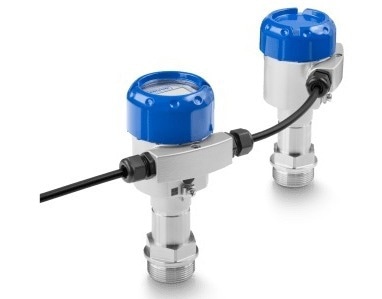With OPTIBAR 5060 eDP, KROHNE adds an electronic differential pressure (eDP) version to the OPTIBAR family. It aims at level, density and differential pressure applications within closed vessels as well as density compensated level measurement in open tanks.
 With OPTIBAR 5060 eDP, KROHNE adds an electronic differential pressure (eDP) version to the OPTIBAR family. Image Credit: Krohne Messtechnik
With OPTIBAR 5060 eDP, KROHNE adds an electronic differential pressure (eDP) version to the OPTIBAR family. Image Credit: Krohne Messtechnik
Compared to classic DP installations with diaphragm seal and capillaries, OPTIBAR 5060 eDP provides a cost-efficient connection to and installation on the vessel: it requires smaller process connections, and the connection between taps is realised via an electronic signal cable instead of oil filled capillaries. OPTIBAR 5060 eDP starts from G½ process connections, and allows for a maximum distance of up to 25 m / 75 ft between top and bottom tap. Thus, cost and installation as well as maintenance time can be saved, especially with tall vessels that would require long capillaries.
For the eDP version, many of the features of the regular OPTIBAR 5060 series are available, e.g. optional Bluetooth communication via smartphone or tablet (with OPTICHECK Pressure Mobile app). It can be configured with metallic or ceramic process diaphragms, a wide range of (hygienic) process connections, various communication options up to FF and Profibus-PA, and housing materials from plastic to stainless steel.
OPTIBAR 5060 eDP also features an integrated static pressure measurement for additional process information. It comes with various industry-specific approvals and is SIL 2/3 certified, with the possibility of remote activation of SIL mode via display, DTM or Bluetooth.
About eDP measurement: eDP is based on two discrete gauge pressure transmitters, which are mounted in the same way as a classical differential pressure transmitters on the vessel. One transmitter, usually at the bottom of the vessel, acts as the primary sensor to measure the gauge pressure in the tank. The secondary transmitter measures the gas pressure at the vessel top, and is electronically connected to the primary transmitter via a signal cable, providing fast and synchronous measurement. The primary sensor then calculates the pressure difference between both. The limits of eDP measurement are at higher gas pressures, for which classical DP transmitters such as OPTIBAR DP 7060 or OPTIBAR DP 3050 are most suitable.
Source: https://krohne.com/en/